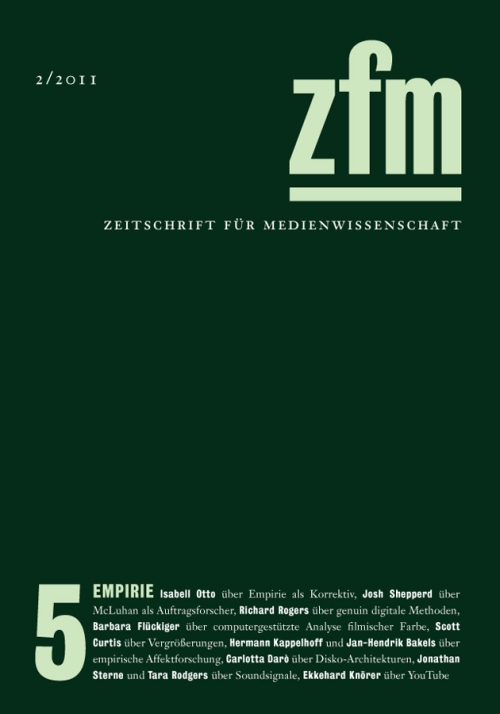Das Zuschauergefühl
Möglichkeiten qualitativer Medienanalyse
Abstract (Deutsch)
Was gewinnt die medienwissenschaftliche Auseinandersetzung mit dem Film, wenn die theoretische Modellbildungen der Filmtheorie um empirisch-psychologische Untersuchungen über die ästhetischen Dimensionen der Filmerfahrung ergänzt und erweitert werden? Im Rahmen eines Ansatzes, der kognitivistische und deleuzianisch-bildtheoretische Theoriebausteine miteinander verknüpft, argumentieren die Autoren anhand des Beispiels des Kriegsfilmgenres, dass die Operationalisierung filmtheoretischer Modelle mehr als nur ein Verfahren zu Verifikation in der Filmanalyse und Filmtheorie vorformulierter Intuitionen darstellt. Vielmehr eröffnet sie ein Feld der Untersuchung formaler Effekte, das von einer letztlich stimulusindifferenten Medienwirkungsforschung bislang noch nicht einmal angedacht worden war.
Abstract (English)
What Spectators Feel. Possibilities of Qualitative Media Analysis
What can media studies gain by coupling theoretical models of the film experience with empirical research in cognitive psychology and the neurosciences? Arguing from within a theoretical framework that combines the insights of cognitive film theorists such as Gregg Smith and Ed Tan with concepts from Deleuzian film theory, the authors take the war film genre as their point of departure to develop a research design that allows for more than merely a verification of the speculative intuitions of film theory. As the authors argue, the combination of film theory with psychology and neurosciences represents a productive new approach to the aesthetic dimension of media communication, an area hitherto unaccounted for or actively ignored by empirical research into so-called media effects.
Bevorzugte Zitationsweise:
Die Veröffentlichung ist rechtlich geschützt, siehe auch § 38 UrhG.
